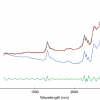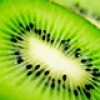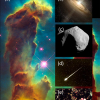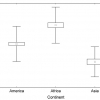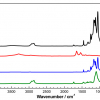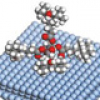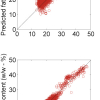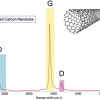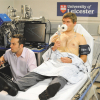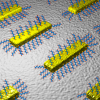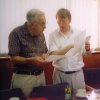Articles and Columns
Tip-enhanced Raman spectroscopy (TERS) and tip-enhanced Raman mapping (TERM) can be used advantageously to investigate the carbon allotropes graphene and single-walled carbon nanotubes, with a spatial resolution in the nanometre range
Bread is the major contributor to Na intake in the human diet. For this reason, it is expected that lowering the amount of salt in bread may lead to a substantial reduction in the sodium intake. However, lowering the amount of salt in bread has an impact on the flavour. Using LIBS, a fast and easy-to-use method could be set up to determine Na distribution in baked bread as an innovative tool to help the development of methods to reduce total sodium content in bread.
Tony (A.M.C.) Davies starts a review of the chemometric ideas that have most excited him over the last 30 years. In this column, he looks at the use of Fourier transformation for data compression. FT can also provide the side benefit of reducing high-frequency noise.
Fuels and the taxes raised from their sale are a big business around the world. To control smuggling, counterfeiting, theft and product diversion, markers can be placed in the fuel. The use of a SERS active compounds as markers is described as well as the development of a portable instrument for detection of the markers in the field.
Many analytical methods have been used to control the quality, authenticity and origin of fresh fruit. NMR methodologies yield a comprehensive metabolic profile, provide direct structural information regarding individual metabolites in the mixture and also give information regarding the water state in the tissue. This is useful in discriminating various fruits varieties, in investigating nutritional properties, in monitoring the development of the fruit and in assessing the optimum harvesting time.
Chemical modification of wood by methods such as acetylation is required to improve characteristics such as photosensitivity and combustibility, and to provide harmonisation of wood properties in order to avoid swelling and shrinking and to improve biodegradability. The authors describe the use of mid and near infrared spectroscopies to monitor chemical changes due to acetylation is described.
Peter Jenks argues that the two quality approaches, ISO 17025 and cGMP, are both lacking, but both could be made much better and virtually identical with single but different improvements!
Tony (A.N.) and Henk-Jan van Manen introduce us to the COmprehensive Analytical Science and Technology (COAST) initiative, a funding effort to counteract what was seen by industry and academia as a decline in fundamental analytical research in the Netherlands and the associated problems around producing high quality researchers and technicians.
This article shows that pyrolysis techniques, in combination with spectroscopy, are helping our understanding of how the organic matter in our solar system came to be. Fascinatingly, they also show how secondary processing of meteorite materials seems to enhance the abilities of atmospheres to host life on planetary surfaces as well as providing the raw materials from which life could originate.
The use of isotope ratio mass spectrometry is on the rise, with more papers published and more labs with the facilities. The authors describe the main IRMS studies conducted on seeds and isotopes and outline the most important aspects of the use of seeds to study plant eco-geochemistry and plant material traceability.
The presence of “particles” in protein pharmaceuticals (biologics) can cause severe, unwanted effects in the drug. The article describes the use of mid-infrared micro-spectroscopy for the investigation and chemical characterisation of single particles in these biologics.
A complication and barrier to wider uptake of SIMS, especially for organic materials, is the complexity of the mass spectrum. The G-SIMS method (from gentle-SIMS) was developed to simplify the spectra and provide direct interpretation based on the physics and chemistry of the SIMS process rather than on statistical analysis techniques such as principal component analysis or library matching methods.
Tony (A.M.C.) Davies and Tom Fearn describe an enhancement of the popular partial least squares (PLS) technique, powered partial least squares (PPLS), that has shown significantly better results.
This article explains what is represented in a Raman spectrum of carbon nanotubes and how to optimise the measurement. There is actually significant diversity within samples of nanotubes which affects both the material properties and the Raman spectrum of the material.
Peter Jenks has discovered quantitative NMR. in his article titled “NMR: is it the future for the analysis of organic molecules?”. If only it wasn’t so expensive, it might be the perfect method to certify pure organic compounds.
There are many reasons for quantifying VOCs in air, from investigating pollution to diagnosis of diseases in humans. PTR-MS has many advantages for this, not least in speed and ability to provide an online analysis. It is a relatively young technique, but has a range of applications from botany and medicine through to industrial process monitoring, security screening, environmental analysis and food science.
Even though lead in fuel has been banned for a number of years, it is still present in by the roadside, as are many other pollutants from vehicles. The combination of Raman spectroscopy and µ-ED-XRF is of particular value. The advantage Raman has is in the possibility of focusing on individual grains, thereby obtaining the spectrum of each grain that comes from traffic-emitted particles.
In principle, electromagnetic SEIRS should be as strong as electromagnetic surface-enhanced Raman scattering (SERS) but, in SEIRS, disturbing fluorescence is absent. In order to get maximum IR vibrational signal enhancement for sensing of rare molecules, strong resonant scattering of plasmonic objects is recommended.
Tony (A.N.) Davies and Robert Lancashire remember Bob McDonald who co-authored the first JCAMP-DX standard for infrared spectroscopy.
How a cat manages to turn and land on its feet may not be the most obvious start to an article in Spectroscopy Europe. However, C.J. Milne and M. Chergui use the example in their article on “Time-resolved X-ray absorption spectroscopy” to show how the time dimension is important in many analyses and applications. There has been a real surge in time-resolved X-ray absorption studies in chemistry, biology and materials science. Picosecond time resolution is routinely achieved and femtosecond resolution has been demonstrated at synchrotrons, albeit at the cost of a significantly reduced photon flux. However, the advent of hard X-ray-free electron lasers offer the promise of making such studies routine.


